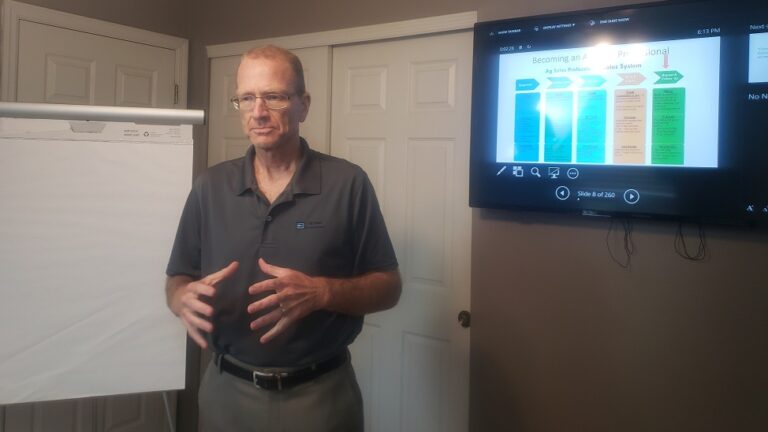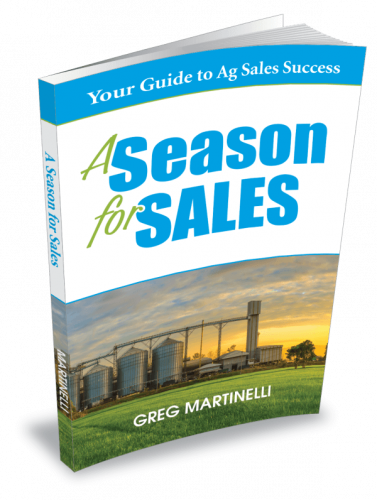Create your own diagnostic tool for prospects to provide evidence of your value
Every salesperson can use some form of a diagnostic tool to help determine the value you bring to a prospect.
On a recent episode of Dateline, a prosecutor made the statement, “Juries like to have a body and DNA in order to make a conviction.” If not familiar, Dateline is typically about an unsolved murder case. In this particular episode, the prosecutor had neither the body of the victim, nor the DNA of the prime suspect at the scene. This comment stirred a connection to something I had already been implementing in my own business: testing, evaluations, and assessments.
In our advanced forensics world, attorneys know they need proof to sell the jury. And yes, they are definitely selling. Our customers are no different. We are not the only one driving onto their farm or into their parking lot to sell them something. We are also not the only salesperson with proof that our products work. We all have charts, graphs, and research that our products are the best.
The problem is that our competitors have their charts, graphs and research that prove they are the best. The confused customer says, “No”! As a customer, we want proof of some kind. We need some form of unbiased evidence that this product or service is the right fit.
Think about car troubles. Is your car not performing or sounding rough? Once the mechanic listens and makes an assumption, they hook it up to a Sun Machine to see if the on-board computers will confirm their suspicion. What about home repairs like your roof or furnace? The first step is typically a free inspection.
One word of caution as we are talking about automotive or home repair diagnostics. Please do not use your diagnostics as a gimmicky way to tell every customer your product is the perfect fit. There is certainly value in Free brake inspections, Free radiator coolant analysis, and Free roof inspections. Your mechanic or your home repair company certainly needs to do an inspection before fixing. However, my personal experience with most of these overly advertised “Free” inspections is not good. Every time I have one of these myself, it seems new brakes or a new roof are exactly what I need. There needs to be a value provided by the diagnostic. That value is a combination of data and your expert opinion.
Build your own diagnostic tool
So, how do we do this in our business? Begin by thinking through all the questions you need to ask a customer when determining how to use your products. In sales training workshops, we work on asking better questions.
3 critical questions a salesperson must answer
I like to start by ask the training group three basic questions:
- “How does your targeted customer make their buying decision on your products?”
- “What information do you need in order to sell your customer?”
- “If you could ask your customer anything at all, what would you ask them?”
The answers to these questions can become the start of your customer analysis. Typically, there are a set of circumstances that make our product the preferred choice or provide a clue as to how much we can add value.
For example, if you sell to crop producers, you may need to know acreage, type of crop, soil type, tillage practices, yield, break-even, etc. With an animal production customer, you may need to know herd size, health status, body condition score, pigs/litter, average daily gain, death loss, etc.
Some of these numbers are highly confidential. Producers aren’t going to just tell you their cost of production or acres without very good reasons. There are two ways to deal with the confidentiality. Both require Transparency. Be as transparent as possible about why you need the info and what you plan to do with it.
One way to handle confidentiality is to give the evaluation tool to the customer. Allow them to fill it out on their own to determine their own savings on your products in the privacy of their home. This can be done on line as well. Most of us don’t have a problem using some basic analysis tool on a web site if it doesn’t require us to enter our name or email.
The second method of handling confidentiality is to have an example of the tool filled in with standard information for your local geography. For example, let’s say that the average producer in your area is farming 1200 acres with an even split of corn and beans, a little wheat, owns their ground and has a cost per acre of 300 for beans and 650 for corn. Yields are 50 and 180 bushels per acre for beans and corn. Now, fill in your diagnostic tool with this average customer. Show that to those prospects that are hesitant to share their info with you. Allow them to confirm, deny or adjust as they tell you.
The more you ground proof your diagnostic tool, the better it becomes for proving your value. In many cases, you might be the only one out there with a tool of this kind. Another way to build credibility is to get it into the hands of several peers on your sales team. Allow them to use it and provide input on how it works. Start this entire process with your manager and make sure you get the right legal verbiage that you are not making any guarantees, etc. Then build it. My first place to ground proof anything is with my best customers. Explain that it is a prototype, a beta version and you would like to see if they find it helpful.
As I work with teams that have a wide variety of experience, 2 weeks to 30 years, I have developed several of my own assessments to help design more customized training programs for each team. This allows me to confidently offer training topics specific to this sales team. I think you can do the exact same thing with your customers, whether they have been farming for 2 weeks or 30 years!
If this blog helped you on your journey to being more effective in your selling, I ask you to share it with those who might also benefit from it.
Sign up for my weekly blog and podcast using the links on this page


